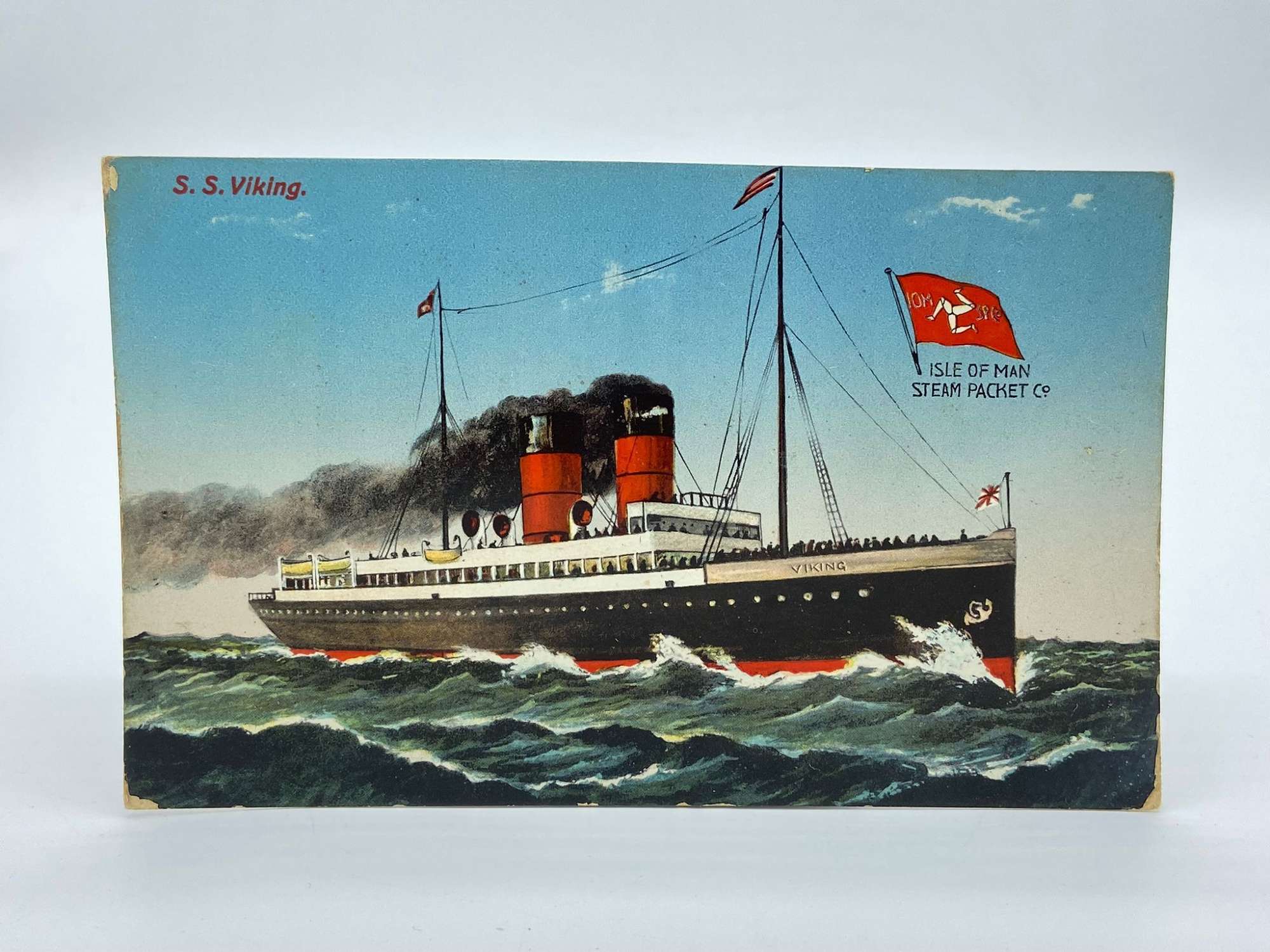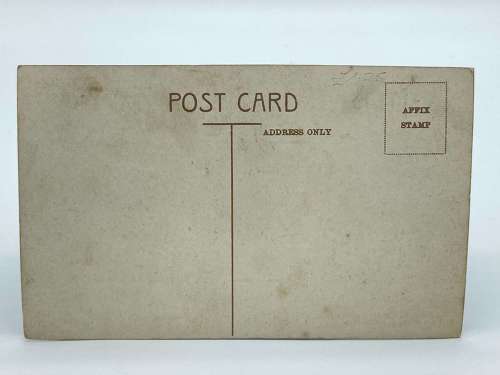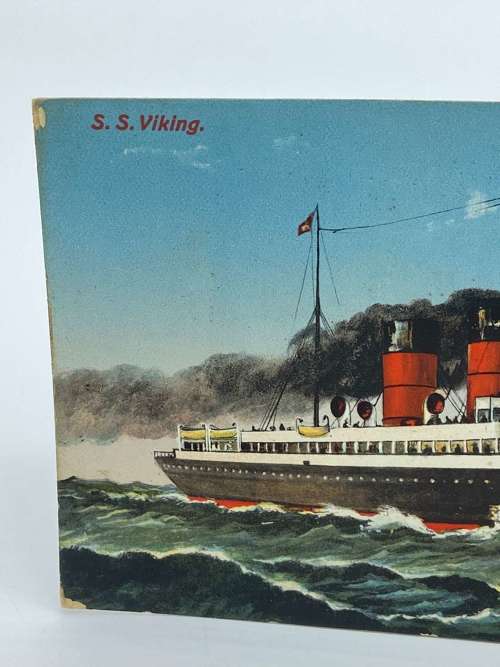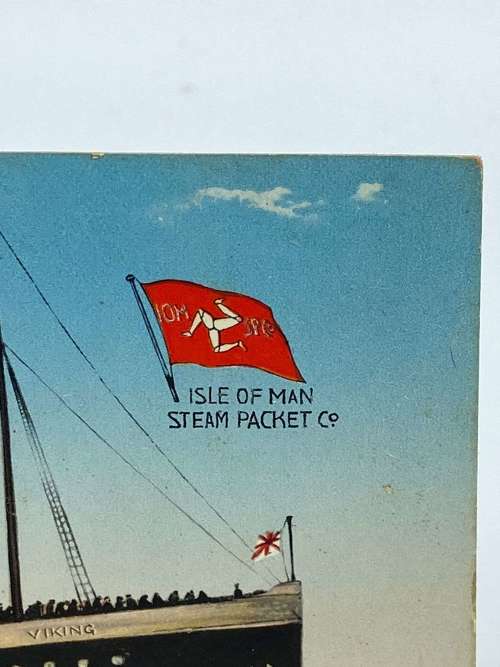WW1 & WW2 Service History Royal Navy S.S Viking Postcard
Delivery Quote Request
Please fill in the form below to request a delivery quote from Atlas Antiques.
Contact Atlas Antiques
 Dorset, United Kingdom
Dorset, United Kingdom
Simply fill in the below form to get in touch with Atlas Antiques regarding this item.
About this item
For sale is a WW1 & WW2 Service History Royal Navy S.S Viking Bombed During D-Day Postcard.
SS (RMS) Viking was a steel, triple-screw turbine-driven passenger steamer operated by the Isle of Man Steam Packet Company between 1905 and 1954. The Viking was requisitioned by the Admiralty on 23 March 1915 and was purchased outright later that year. Following her fitting out she was commissioned at Liverpool on 11 August. She was named Vindex by the Admiralty, who purchased her on 11 October. She had been converted to a Seaplane Carrier in similar fashion to the Ben-my-Chree and first served at the Nore and Harwich before proceeding to the Mediterranean. Vindex carried four Short Type 184 seaplanes and could also carry up to four Bristol Scout fighters. The Bristol Scout was a landplane on wheels and consequently at the end of a mission it would have to ditch and remain supported by flotation bags until it could be lifted back on board by crane. Vindex was attached to the Grand Fleet at Harwich in November 1915. On 3 November one of her fighter aircraft, piloted by Sub. Lieut. H. F. Towler was launched from her flying off platform, soon to be called the Flight deck. This was the first instance of a land plane with a wheeled undercarriage taking off from the deck of an aircraft carrier Towler's achievement soon led to Bristol Scouts taking off regularly from the short platforms of these small aircraft carriers. In 1916 Vindex conducted more flying experiments at sea, and again they were successful. She carried Sopwith 1½ Strutter fighters that had been fitted with skids instead of wheels. Using these skids as slides, the aircraft were able to fly off from the carrier's forward trackway, which was 64 feet (20 m) long. After her work with the Harwich and other North Sea forces, Vindex went to the Eastern Mediterranean in 1918, where she did work similar to the Ben-my-Chree. She operated there until the end of the War and returned to Plymouth in March 1919. Viking was requisitioned in the first week of the War, in September 1939, and operated as a personnel vessel. She acted as a transport, mainly to Cherbourg from Southampton. Although actively engaged in transporting the men and matériel of the British Expeditionary Force to France at the outbreak of hostilities, the Viking did not take part in the critical Operation Dynamo, for she had recently been bombed in the Thames Estuary and was undergoing repairs. Nonetheless, she was active in the latter stages of the BEF's withdrawal from France. Captained by James Bridson, with Edward Gelling and Harry Kinley as chief and second officers, Viking was involved in Operation Aerial at Le Harve and later Cherbourg. Following this she was despatched to Guernsey to assist in the Evacuation of the Channel Islands. Viking arrived at Saint Peter Port prepared to take off evacuees and consequently evacuated 1,800 schoolchildren, almost the entire juvenile population of the island. The children were safely landed at Weymouth. Following that phase of the War, she made passage to Barrow in Furness and then was laid up at the Tongue in Douglas Harbour before resuming her civilian run between Fleetwood and Douglas. Viking was requisitioned again, initially she was involved in the trooping service to Orkney and Shetland and then served as a Fleet Air Arm target vessel based on Crail for seven months from June 1942. From December 1943 until 1945 she was again used as a personnel ship. Viking was in service off the French Coast during the D-Day. On 28 June 1944 she was hit by a flying bomb whilst undergoing maintenance in the Surrey Commercial Docks, London. She was taken out of war support in June 1945 and subsequently returned to the Steam Packet. This is in good condition. And will be sent via Royal Mail 1st class signed for and dispatched within two working days.Additional Information
14392 (MZ-43248)
![]() Dorset, United Kingdom
Dorset, United Kingdom
Atlas Antiques Promises You - Fresh stock weekly - Fair & affordable prices - Everything listed is original, money back guaranteed. (Unless marked fantasy or reproduction). - Fast responses and delivery's made within 2-3 working days. Atlas Antiques only handles items in terms of...




















